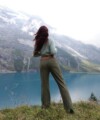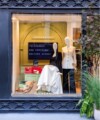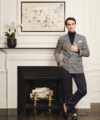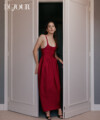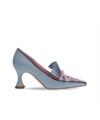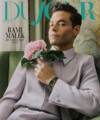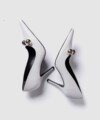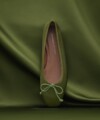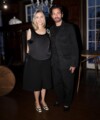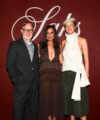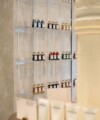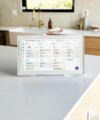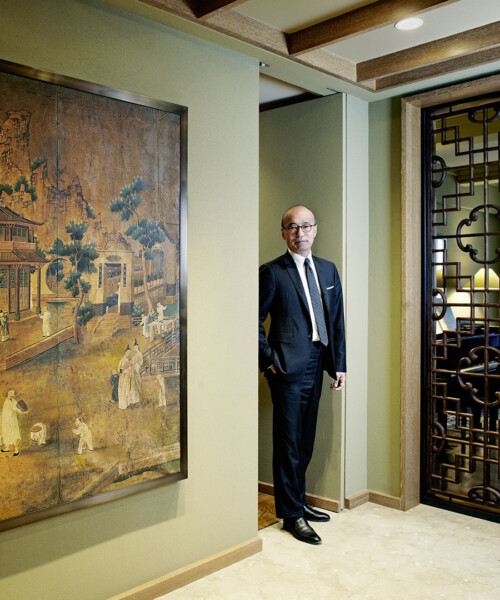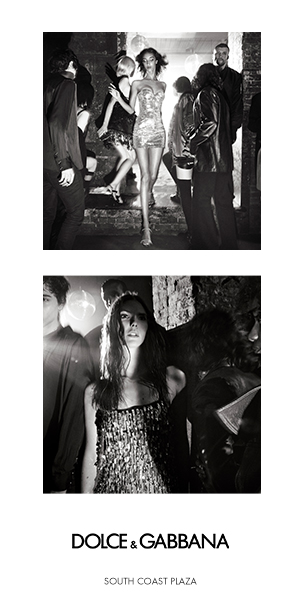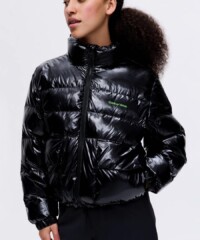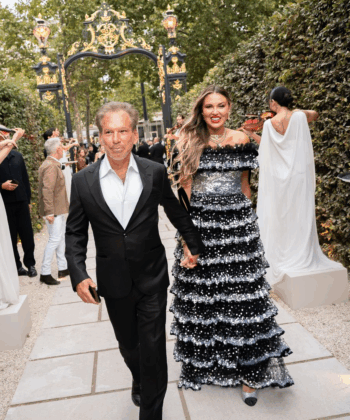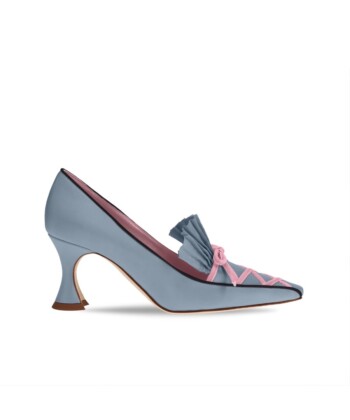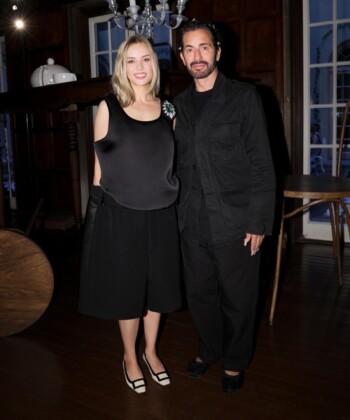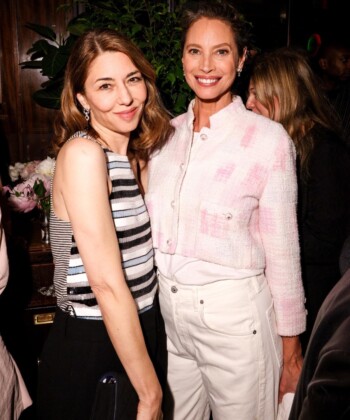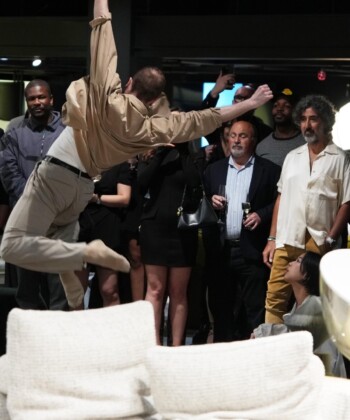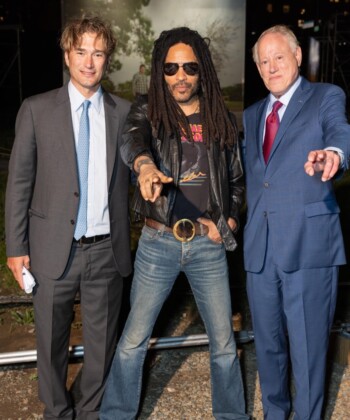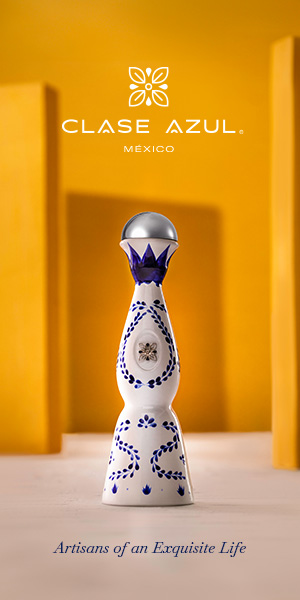On an afternoon in early spring, Harold Koda, the curator in charge of the Costume Institute at the Metropolitan Museum of Art, left his office and went home.
It’s a New Yorker’s dream to be able to walk to work, and the pre-war Park Avenue apartment that Harold Koda shares with his longtime partner, lawyer Alan Kornberg, is just three blocks from the Metropolitan Museumon Fifth Avenue.
A few weeks ago, with everything and everyone at the Met on the brink of Charles James Fever—“Charles James: Beyond Fashion” is the Costume Institute’s big spring exhibition—Koda invited me here to talk about the James show.
I’d been to the apartment before and now, as then, found quietude and beauty. Colors are thoughtful and rich. The furniture is important but not stiflingly so. There is proportion and permeability, nothing claustrophobic, a cadence as you go from room to room. There’s nothing in the cognoscenti-approved interior design lexicon to categorize its look. Chino-Neo Classical-Exoticism?
“Here you can find no patterned wallpapers, nor is a single opened fan on display, but the japonisme is present all the same,” says Eric Boman, a close friend of Koda’s. “There’s a spirit of Buddhist serenity that must be cleansing after a day in the cavernous people-filled halls of the Met.”
As you might expect in a home shared by a master curator and a legal mind, nothing is superfluous, from the Frette linens in the bedroom to the 19th-century tole chandelier in the dining room with all its gilding gone.
“I love the whole idea of a mix, and wabi-sabi,” Koda says as we settle in the library. “The beauty of transient things.”
Kornberg and Koda asked decorator Richard Lee to help them design the apartment as well as their country home in Dutchess County. (They recently acquired a third house on the waterfront in Maine.) “It’s absolute hubris to think that because I can do one thing”—like be a museum curator—“I’ll be good at another,” says Koda. “My problem is that I like too much. Richard helps me edit.”
Missing from the time I last visited is a startling pair of life-size nudes by the photographer Gary Schneider, which had hung extremely front and center in the foyer.
Koda laughs when asked where the portraits are hiding. “You mean as one friend called them ‘the sentinels at the gates of hell?’ People would come to the apartment and tell us how serene it is here so much so that it really started to bug us. So we put our Gary Schneider nudes there to get a reaction.” They got a lot of reactions. “We moved the portraits when just too many people had a hard time with them.”
The conversation turns from nudity to clothing, specifically the James exhibition that runs from May 8 to August 10 at the Met. James is celebrated for his “sculptural, scientific, and mathematical approach to designing,” and more than 100 pieces are included in the exhibition, Koda says. The mother lode comes from the collection at the Brooklyn Museum that was transferred to the Costume Institute in 2009. James, who died in 1978, had always encouraged his clients, women such as Austine Hearst and Dominique de Menil, to donate the clothing he made for them to the museum in Brooklyn.
James was “wildly idiosyncratic and emotionally fraught,” Koda says, a genius whose “architectural understanding of the human figure and clothing, his study of anatomy and his obsession about the quality of his work, and the luxury of his materials, transcended fashion.”
He smiles. “Of course it’s very difficult to tell someone who isn’t a dressmaker or a tailor how one ball gown is different than another ball gown. We’re hoping that by the time visitors leave the exhibition, they will have a better understanding of how clothing can actually be an artistic practice.”

Library: Cerused oak bookcases; Chris Jordan’s Circuit Boards, Atlanta, 2004; Hervé Van der Straeten Epines tripod tables in bronze with black lacquer; Adnet oak and blackened iron side table.
Contrary to what you might expect, Koda doesn’t offer gestures and pronouncements like the most famous of Costume Institute alumni, Diana Vreeland, for whom he interned at the Met in his earliest days in New York. He isn’t wearing an afternoon kimono, or beads, or particularly interesting shoes made of rare velvet or reptile, not even a twee bow tie or oversize eyeglasses. His uniform, as it is most days, is a dark, but not too dark, suit by Thom Browne. Nothing too fashion-y or distracting that would compete with the costumes and clothing he mixes with at work. The French art critic Donatien Grau describes Koda as “a discreet living legend,” and “one of the most prestigious figures of the New York fashion world.”
Koda, who grew up in Hawaii, was the associate curator of the Museum at the Fashion Institute of Technology until he took a time out to study for a master’s degree in landscape architecture at Harvard’s Graduate School of Design, graduating in June 2000. In November that same year, he became the curator in charge at the Costume Institute. Fashion to landscape and back again? Why not? Landscape design and fashion are languages, Koda explains, that hold great clues to history and culture whenever we look.
“Harold is extremely self-effacing,” says writer Amy Fine Collins. “He wears his intelligence very lightly. He’s intensely cerebral and profoundly complex in the way he sees things.” She pauses. “There’s a side of him that is very Japanese—inward, spare, austere and hardworking. But,” she adds, “there’s another side to him that’s intensely playful.”
Definitely a playful side: Koda had just secured tickets to see the X-rated rendition of Beauty and the Beast, starring burlesque performer Julie Atlas Muz and her real-life husband, Mat Fraser, at the Abrons Arts Center on the Lower East Side. And he invited the best-dressed philanthropist, Deeda Blair, as his date.
The afternoon is getting on. It’s time for Koda to leave his idyllic apartment and return to the hubbub of the museum.
Before we go, I ask how he (and not I) would describe the complex greenish color of the Japanese teahouse stucco on the walls here. He answers first with levity and then a curator’s poignant concern for precision.
“It’s a pond-scum-petrol-mushroom-moss green,” Koda says. “But for art people there is a little coppery umber undertone to the green that is closest to the exact color called ‘tea dust’ in Chinese pottery.”
And to think that the majority of us would have felt sufficiently sophisticated if we’d said moss green.
I wondered if working in the language of one designer for over year, as Koda has with James, would, or could, inspire his at-home aesthetic.
“Well, funny you should ask,” he answers. “I remember during my first year in New York, when Rizzoli was on Fifth Avenue, that on the mezzanine level there was a James sofa that I coveted.” In addition to haute couture gowns, James also designed furniture.
“It wasn’t one of his larger pieces—just a voluptuous, three-button settee in shell-pink suede, and it was incredible.” The only problem was that “with its sensual curves it really wouldn’t work in any of our homes because they’re too orthogonal.”
Koda pauses. A vision comes to him. “Maybe it means a fourth house!” The blueprint is formulating as we speak. “Designed by Zaha Hadid. In Bolinas, north of San Francisco. It’s still very wabi-sabi there: hippies and dot-com billionaires.”
MORE:
At Home With an Art-World Power Couple
The Met Exhibit that Broke a Record
Lessons from a Self-Taught Art Collector


